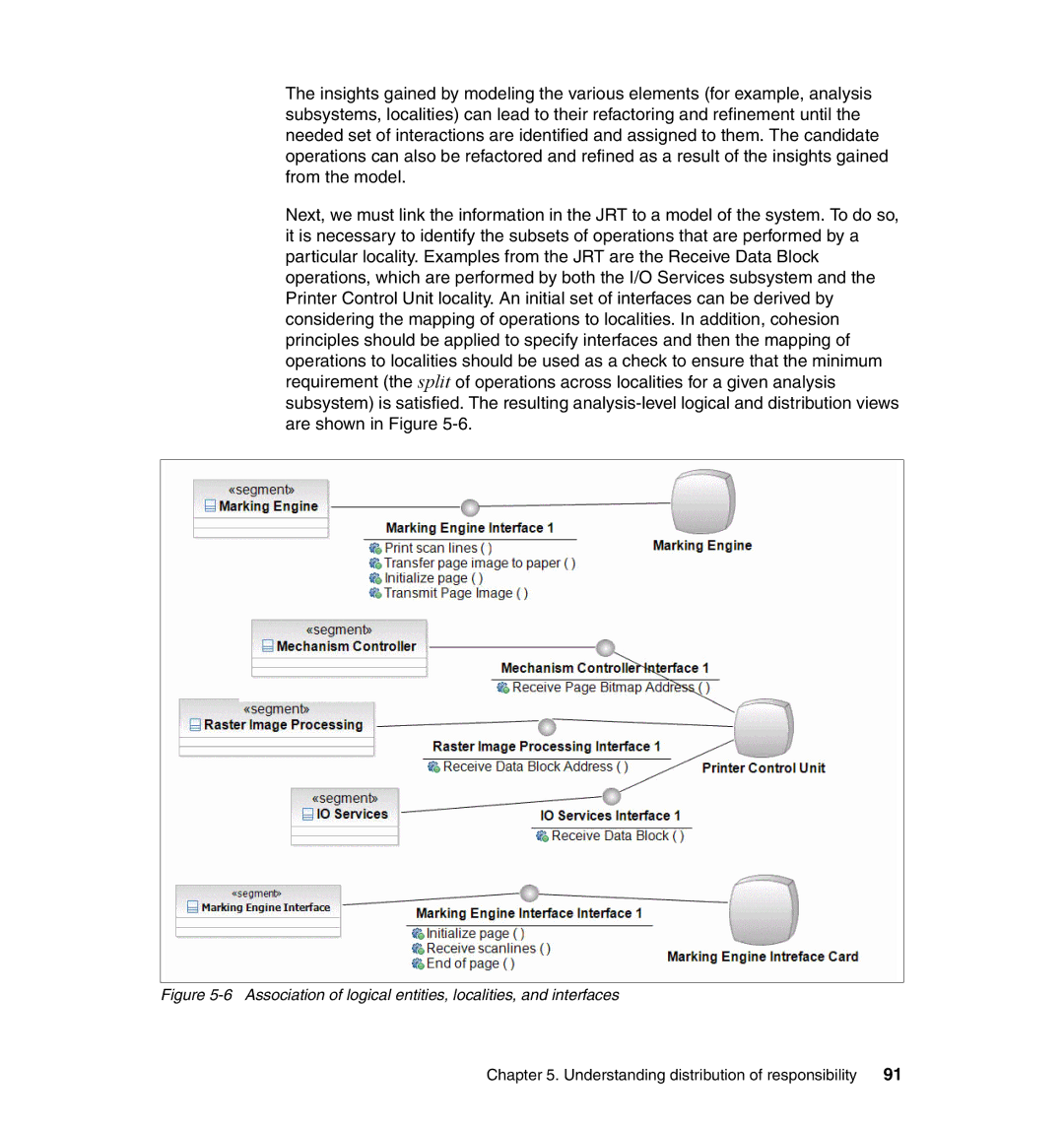
The insights gained by modeling the various elements (for example, analysis subsystems, localities) can lead to their refactoring and refinement until the needed set of interactions are identified and assigned to them. The candidate operations can also be refactored and refined as a result of the insights gained from the model.
Next, we must link the information in the JRT to a model of the system. To do so, it is necessary to identify the subsets of operations that are performed by a particular locality. Examples from the JRT are the Receive Data Block operations, which are performed by both the I/O Services subsystem and the Printer Control Unit locality. An initial set of interfaces can be derived by considering the mapping of operations to localities. In addition, cohesion principles should be applied to specify interfaces and then the mapping of operations to localities should be used as a check to ensure that the minimum requirement (the split of operations across localities for a given analysis subsystem) is satisfied. The resulting
Figure 5-6 Association of logical entities, localities, and interfaces
Chapter 5. Understanding distribution of responsibility | 91 |
